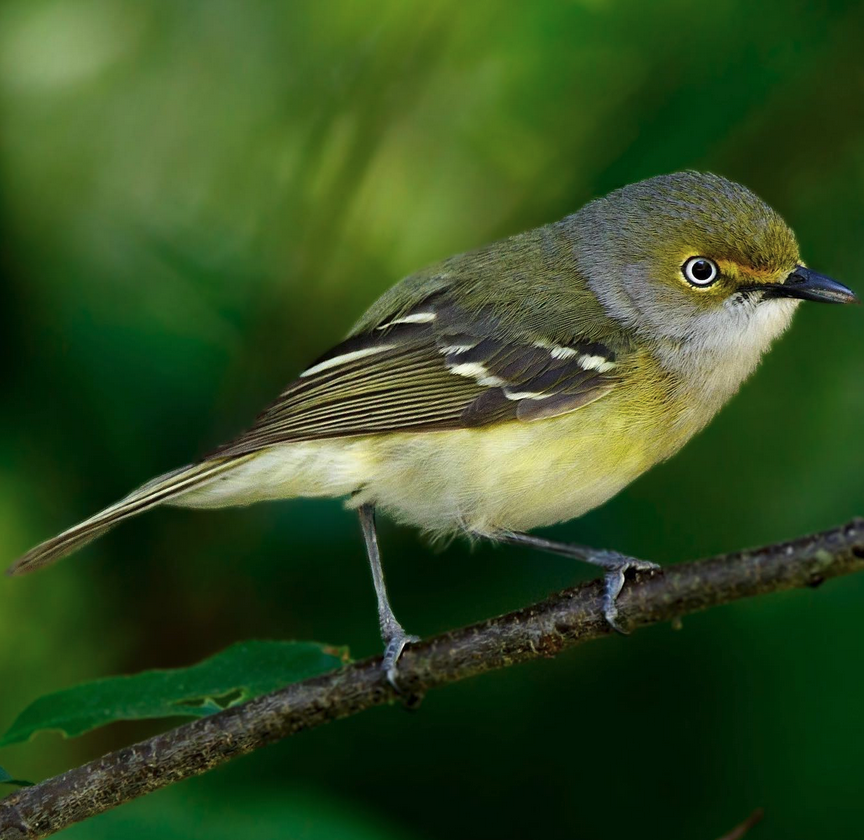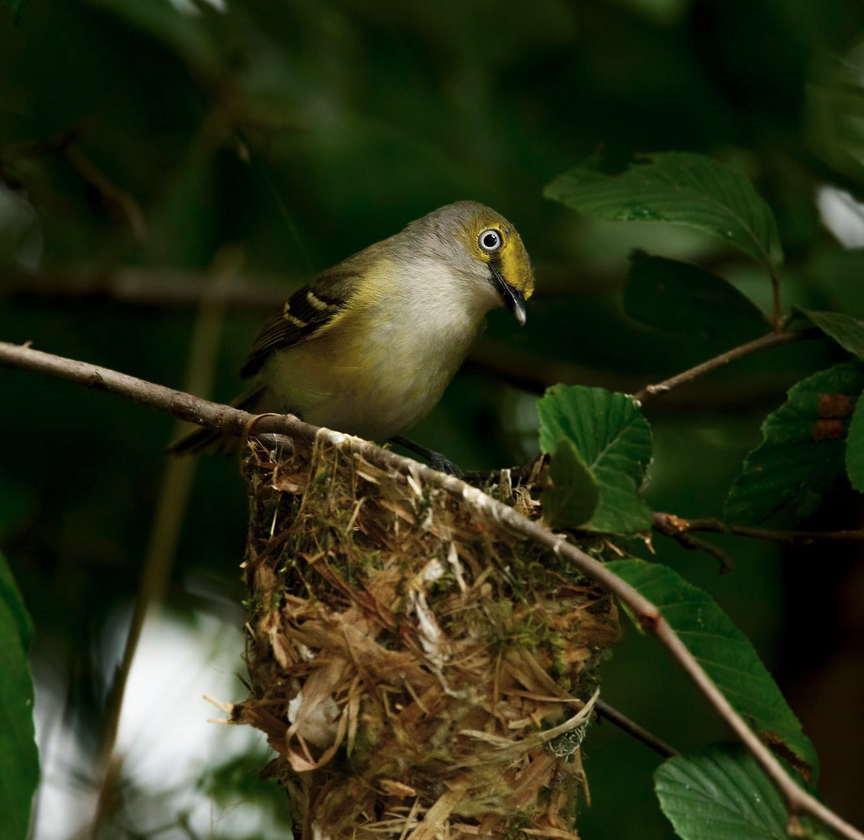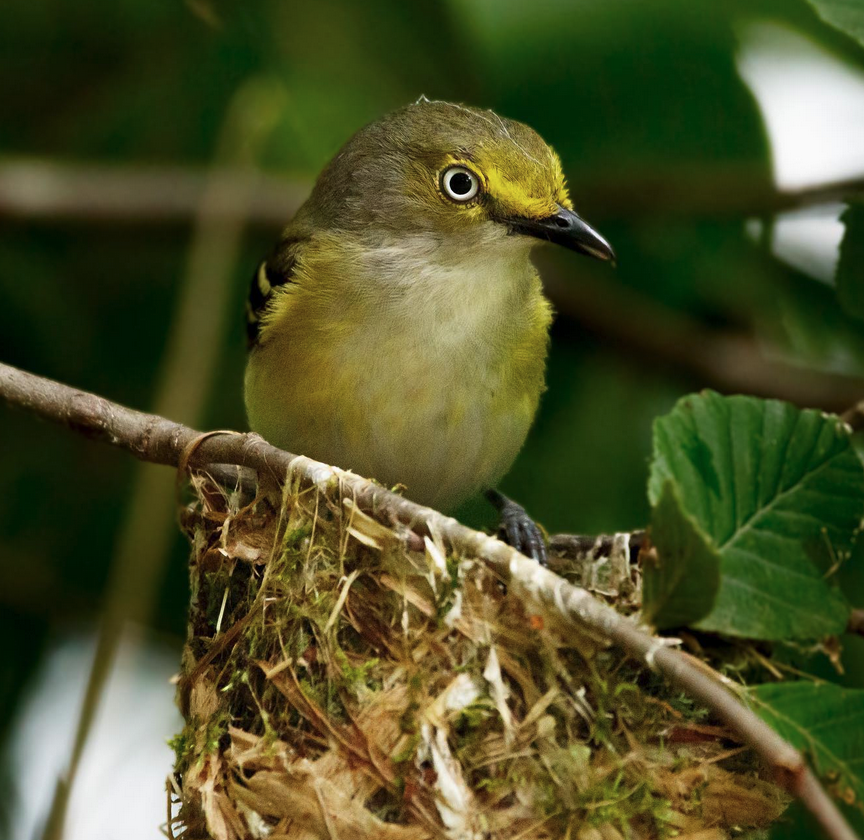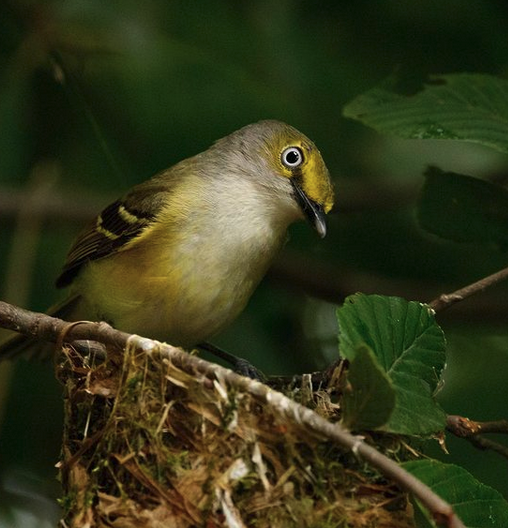By Sally Siko
One of my favorite birds I spotted while sitting by the creek at the Croatan NF in east central NC was this White eyed Vireo. It was quite easy to find this bird as he kept calling out loudly from the brush down at the waters edge. These Vireos are also easy to ID with those one of a kind, light blue eyes. I’m not sure why they’re called “white eyed” although it could be the color of the sky reflecting in their eyes that gives them that slight azure hue.

White eyed Vireos are the only members of the Vireo family that prefer to forage and nest in the understory of forests and brushy areas.
*scroll to see nest pics from last spring
In fact, you’re most likely to see them at eye level looking for a meal.They are usually found in wet areas such as along the shorelines of creeks, ponds, swamps and marshes. The dense scrub brush growing along banks of the creeks and swamps here at Croatan is a great example of their favored habitat.


These handsome birds call North Carolina home during the summer with a range that stretches from lower elevations of the Appalachian’s all the way to the coast. They’ll be here throughout mid October so you’ll have plenty of time to see them in the year ahead.
Photos by @sally_siko of @bestlife_birding on my mighty mirrorless monster, the @canonusa #R5





